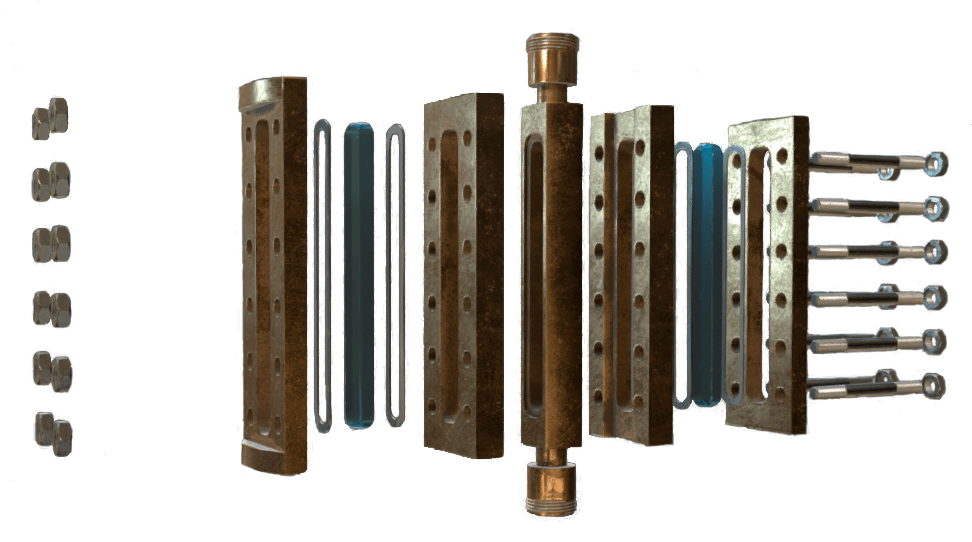Introduction
To operate industrial boilers safely (watertube and firetube), water level measurement devices are installed; the gauge glass is one such device. Boiler water gauge glasses let boiler operators visually determine the correct water level within the boiler. Boiler gauges are simple in design, but very effective. Additional water level measurement devices are often installed, although these are often used for remote level indication rather than local level indication. Low pressure boiler gauges use a single tubular design whilst double plate boiler gauges are used for higher pressures and temperatures.

Exploded View Boiler Gauge Glass
How Boiler Gauge Glasses Work
Under normal operating conditions, the level seen at the gauge glass is referred to as the normal operating water level (NOWL). If the boiler has been designed well and the gauge glass has been installed correctly, the NOWL should be approximately in the middle of the glass. The NOWL represents the interface between steam and water within the boiler (the place at which steam meets water within the boiler shell or steam drum etc.).

Boiler Gauge Glass Components
To ensure the gauge glass measurement continues to be accurate, a blowdown occurs at scheduled intervals (daily or weekly etc.). The main purpose of a blowdown is to remove any blockage within the water or steam pipework that connects the boiler to the gauge glass.

Mounted Boiler Gauge Glass
Enjoying this article? Then be sure to check out our Engineering Video Courses! Each course has a quiz, handbook, and you will receive a certificate when you finish the course. Enjoy!
Boiler Gauge Glass Blowdown Procedure
Assuming the boiler is in service, the following blowdown procedure can be used; there are however acceptable variations of this procedure (see the below video for an alternative blowdown procedure). IMPORTANT – the below procedure is only a guide and does not replace any internal documents or safety notices issued by appropriate bodies. If you are uncertain of how to perform a blowdown procedure correctly, consult a qualified person.
- First, prove that the steam and water valves seal tightly by closing the steam valve, closing the water valve, then slowly opening the drain valve. If the valves seal correctly, flow through the drain valve will reduce then stop.
- Slowly open the steam valve and check for discharge out of the drain, then close the steam valve.
- Slowly open the water valve and check for discharge out of the drain, then close the water valve.
- Close the drain valve.
- Open the water valve slowly and the gauge glass will begin to fill.
- When the water valve is fully open, open the steam valve slowly.
- The water level in the boiler gauge glass will settle to the same level as that in the boiler.
In some systems, double valve isolations are provided, however, the procedure remains the same, the difference is that both valves on the same line are closed or opened at the same time.
The below video shows an animated boiler gauge glass blowdown procedure, note that it is not the same procedure as indicated by the numbered bullet points above.
Boiler Gauge Glass Blowdown Procedure Animation
Related Online Engineering Courses
Introduction to Steam, Boilers and Thermodynamics
Sub-Critical, Supercritical, and Ultra-Supercritical Boilers
How Coal Fired Power Stations Work Part
Additional Resources
https://www.marineinsight.com/tech/boiler/procedure-for-boiler-gauge-glass-maintenance-on-a-ship
https://marinerspoint.in/boiler-gauge-glass-blow-through-procedure/
